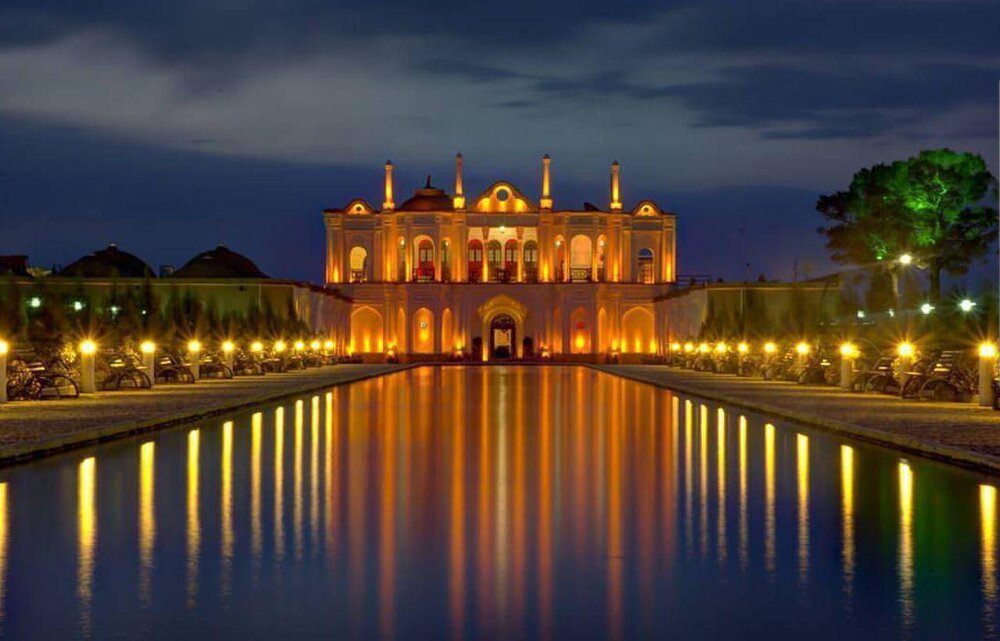Fath-Abad Garden, a green jewel in heart of desert

TEHRAN – Fath-Abad Garden, one of the valuable and fascinating tourist attractions of Kerman province, southeastern Iran, shines like a green jewel in the heart of the desert.
Located 25 kilometers from the province’s capital, Kerman, the Qajar-era (1789–1925) garden, which is one of the oldest gardens in Iran, was built during the rule of Fazl-Ali Khan Biglarbeigi, the city’s governor at the time. That’s why the garden is also known as Biglarbeigi Mansion.
Built around 1876 and with an area of 13 hectares, the complex includes a two-story mansion at the northern end of the garden. The building with arches on both sides and three-door and five-door rooms in the middle has a unique architecture of the European-Iranian style that has modeled the historical Shazdeh Garden in Mahan.
The building is surrounded by a pool in front and various agricultural lands and gardens around. The materials used in this building are all made of raw clay and mud and a layer of plaster is covered on it.
Exquisite plasterwork and beautiful illumination could be seen inside the rooms, which are decorated in the style of traditional Qajar rooms, the most famous of which is the painting room.
The painting room, which was used to be the residence of the ruler of Kerman, is covered with unique paintings and murals.
Thirty meters east of the main building, there is a smaller one-story building known as Four-Season Mansion, with a central dome and columned porches. The brickwork and plasterwork of this structure are so beautiful that make all visitors admire Iranian art.
There is also a museum inside the garden, the Museum of the Rulers, where a collection of biographies and pictures of the rulers of Kerman is kept.
A part of the complex is also dedicated to a botanical garden, which with its unique products generates income for the complex and covers the expenses to some extent.
The complex, which was added to the National Heritage list in 2002, was gradually forgotten, abandoned, and ruined. In 2014, a restoration project was commenced in the garden, which has made it one of the unforgettable tourist attractions in the region.
Kerman province is bounded by the provinces of Fars on the west, Yazd on the north, South Khorasan on the northeast, Sistan-Baluchestan on the east, and Hormozgan on the south. It includes the southern part of the central Iranian desert, the Dasht-e Lut. The southern Lut is relatively dry and is not saline, while in the east are sand dunes and in the west, wind-carved ridges 180–240 feet (55–70 meters) high, called kalut.
The big and sprawling province has been a cultural melting pot since antiquity, blending Persians with subcontinental tribe dwellers. UNESCO describes Kerman as “one of the important locations that connect West to East, and North to South.” It is home to myriad historical sites and scenic landscapes such as Bazaar-e Sartasari, Jabalieh Dome, Ganjali Khan Bathhouse, Malek Jameh Mosque, and Shahdad Desert to name a few.
ABU/MG
Leave a Comment